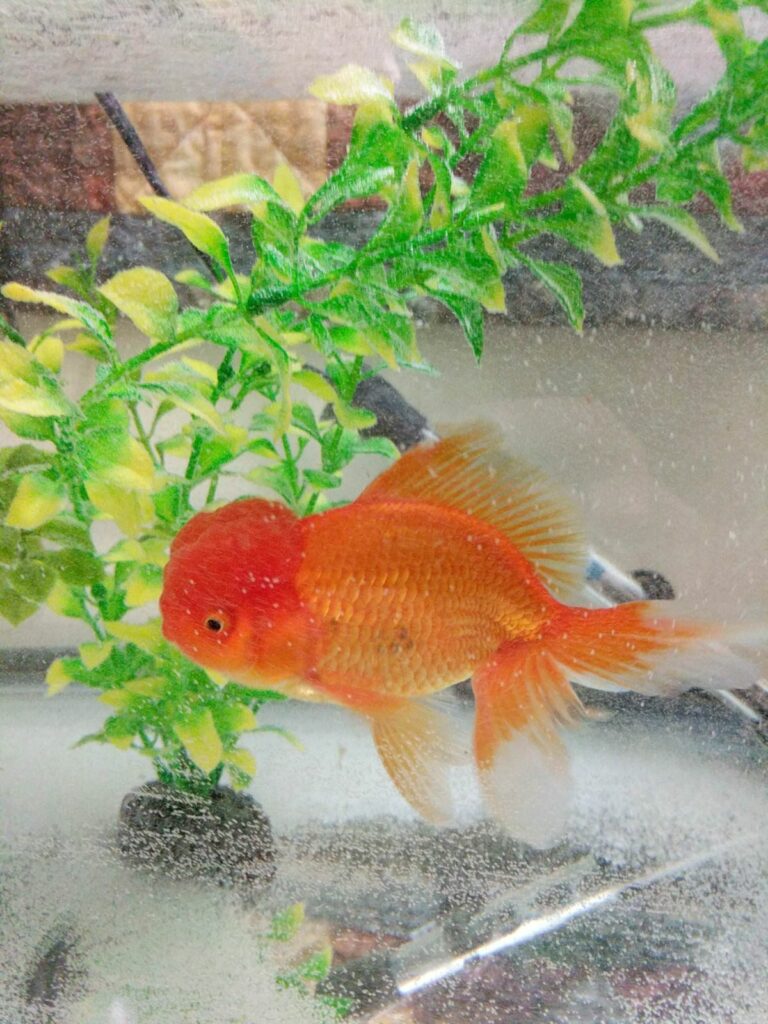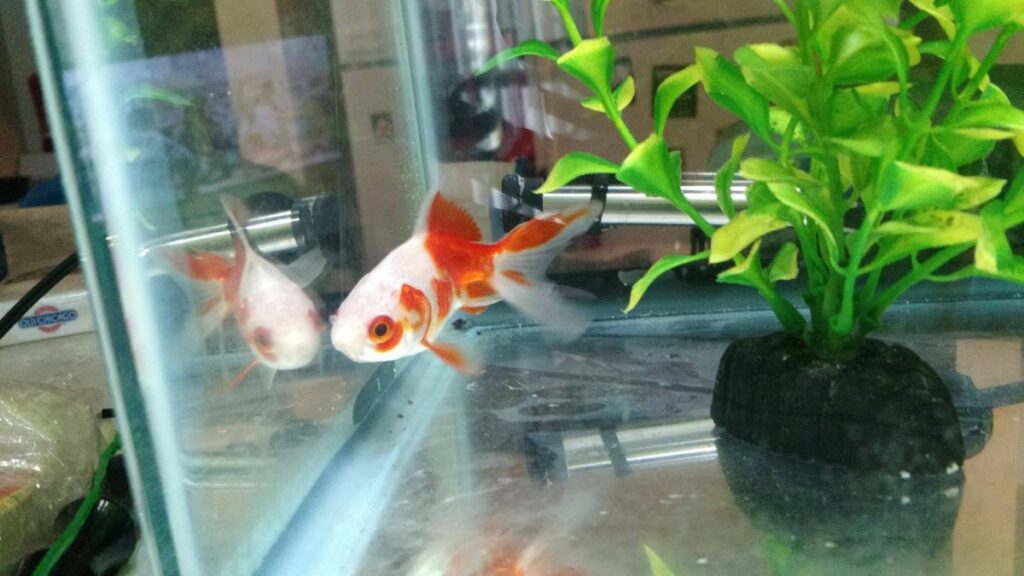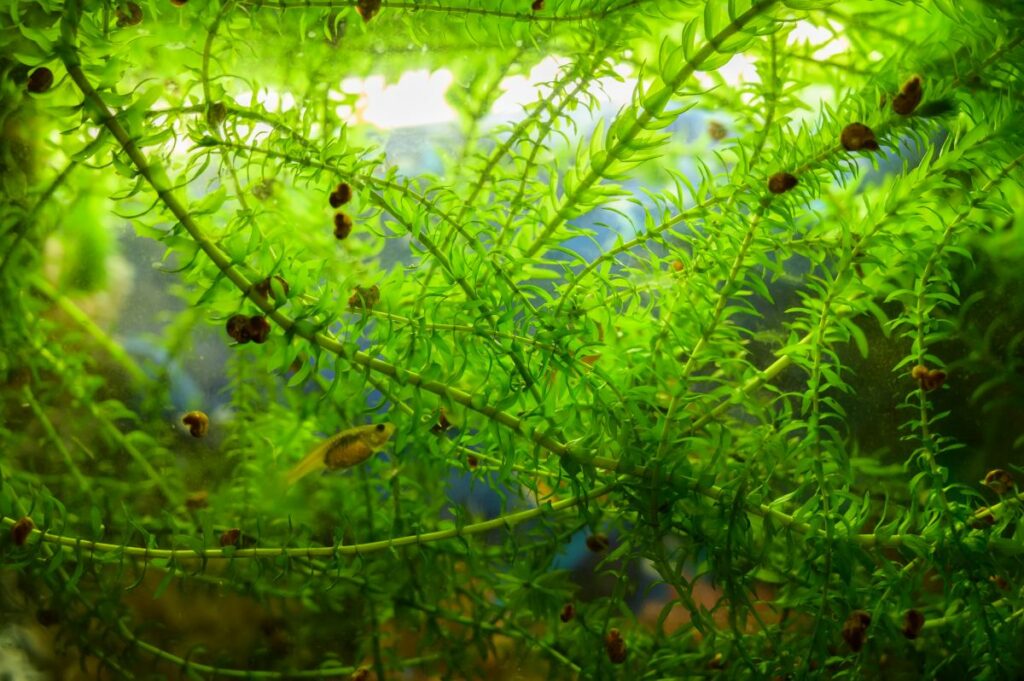Nitrite is a toxic compound that is dangerous to aquarium fish. It is the first step in the nitrogen cycle of your fish tank. Ammonia (NH3+), which is even more toxic, is consumed by nitrifying bacteria. They excrete it as nitrite (NO2-), which remains harmful until it is converted into nitrate (NO3-). Since nitrite is an intermediary step in the nitrogen cycle, it is rare to see high nitrite in a mature aquarium. What causes high nitrite levels?

Nitrite Levels in Fish Tanks
One way nitrite poisoning in fish occurs is when the tank is still cycling but the process has not completed. The delicate condition is called new tank syndrome since it was common knowledge that fish were prone to dying in new aquariums. But for many years no one knew why.
Since bacteria are living organisms they need food to survive. But each stage relies on the previous stage being already established. You can’t have bacteria to convert nitrite to nitrate until you have a population of bacteria that eats ammonia to produce nitrite. That means a nitrite spike is common in new tanks until the nitrite-eating bacteria are able to catch up.
Nitrite poisoning also occurs if you manage to reset your aquarium’s nitrogen cycle. That happens most often when a well-meaning fish tank keeper decides to give their tank a spring cleaning. They remove everything from the tank and scrub it, even the gravel and filter.
Then they add fresh water and all of their fish to the spotless tank. Not realizing that they’ve purged the tank of their beneficial bacteria and have no biological filtration capacity. Ammonia will spike first, followed by nitrite.
High nitrites in aquariums are detected using nitrite test kits. They are sold alone or as part of freshwater master test kits. I test nitrite levels in fish tanks whenever I see an increase in ammonia. Nitrite tests should also be done when cycling a new aquarium to ensure your bacteria are off to a good start.
Nitrite in Saltwater Tanks
Reducing nitrites in aquariums is not an issue for saltwater tanks. Nitrite is not toxic to the majority of marine life; at least, not in concentrations outside of laboratories. The reason for this is in how nitrite toxicity works.
Nitrite poisoning fish occurs when the chemical displaces chloride ions. The NO2- molecule has a higher attraction for the molecular receptor for chloride that all fish need. Since chloride levels are low in freshwater systems, too much nitrite will cause fish to lose access to it.
In the sea, the amount of chloride is too high for it to be overwhelmed by nitrite. Chloride (Cl-) is half of the salt molecules (NaCl) in solution that makes the ocean so briny.
The most sensitive marine species are affected at 30 to 60 parts per million of nitrite. But the rest will tolerate nitrite at hundreds or even thousands of ppm. Contrast that to freshwater tanks, where 1 to 5 ppm is dangerous for aquarium fish. Both ammonia and nitrate are still dangerous to marine life, however.
Signs of Nitrite Poisoning in Fish

NItrite poisoning symptoms are hard to detect if you’ve never seen them before. But there are a few symptoms that, along with a water test kit, will give you a positive ID:
- Bright Red and Inflamed gills: blood starts to collect in the gills as breathing is impaired by high nitrite in fish tank water. They will start to bleed if levels remain high for too long. Brown gills and blood are sometimes listed as a sign of nitrite poisoning in fish. But that’s a sign of high nitrate levels, not nitrite. Nitrate acts by replacing oxygen, causing blood to lose color.
- Rapid Breathing and Hanging Near the Surface: aquarium fish spend all of their time near the surface as gill function continues to diminish. Aquarists often mistake this symptom for low oxygen levels. Some fish will spend all of their time along the bottom instead of the surface.
- Loss of Appetite: when nitrite poisoning fish symptoms grow worse, they stop eating and focus on breathing and survival. You have a day or a few hours before your fish die at this stage. Any leftover uneaten food will make the problem worse since it decays into ammonia. Which is then converted into more nitrite.
How to Reduce Nitrite in Fish Tank
Lowering nitrite in aquariums is best done through water changes. If your fish are showing any of the symptoms above a large change is needed. Start with a 50% water change and refill the fish tank with dechlorinated tap water. Do your best to match the pH and temperature of the incoming water so you don’t cause your fish added stress.
Continue to observe your fish for 30 minutes and retest your aquarium water. If levels are still dangerous then do another water change. If your nitrite levels are high because you have a new aquarium, then aim for low but detectable nitrite levels.
You need to have some nitrite available so the second stage of bacteria has food to grow. By removing all nitrite their numbers won’t increase and your tank will remain uncycled.
Add Beneficial Bacteria
One way to jump-start the cycling process is by adding an influx of beneficial bacteria. Microbe Lift is one such brand; their product will boost the capacity of your tank to process both ammonia and nitrite.
If you have a second aquarium that is cycled, then you have another source of beneficial bacteria. A piece of colonized filter media added to the new tank’s filter will also speed up the cycling process.
Add Aquarium Salt
When nitrite in fish tanks is high, fish lose access to valuable chloride ions. The fastest way to reverse this process is to add fresh chloride in the form of aquarium salt.
One tablespoon per 5 gallons of water volume will reverse nitrite poisoning in fish. You can increase this concentration over time if you have salt-loving fish like mollies or African cichlids. But one tablespoon per 5 gallons is safe even for salt-sensitive species like tetras, loaches, and cory catfish.
Aquarium salt is also helpful for diseases like fish ich, anchor worms, and fin rot. Salt is a tonic and medication that every freshwater aquarist should have on hand.
Increase Aeration
Fish struggle to breathe when suffering from nitrite poisoning. Adding additional aeration in the form of an air stone or stronger water flow reduces stress and increases their chances for survival. It won’t cure nitrite toxicity but it does help.
Add Live Plants

Live plants are more of a preventative measure than a cure. If your nitrite levels are high already then use any of the above methods. But plants will help prevent a future nitrite spike in aquarium.
Plants use all nitrogenous waste products as fertilizer. Ammonia is what they absorb first, followed by nitrite, and then nitrate. That order is perfect since ammonia and nitrite are the most toxic to fish health. Plants use nitrite to form proteins in their tissues and lock it away until they die. Trimming back your plants and tossing the excess growth removes nitrite from your tank for good.
Fast growing plants are the best at locking away ammonia and nitrite. Duckweed, hornwort, and other floating plants are nitrite sponges that require next to no care.
Conclusion
High nitrites in aquarium water is most often found when the cycling process has been disrupted. It’s treated through large water changes, adding aquarium salt, and helping your beneficial bacteria re-establish themselves. When caught early enough your fish will recover fast.
FAQs
Nitrite is the intermediary step in the aquarium nitrogen cycle. Ammonia is released as fish waste and from the decay of proteins in leftover food or fish poop. Ammonia is converted to nitrite by your beneficial bacteria. And that nitrite is converted in the next step to nitrate.
Nitrites are less toxic than ammonia, which has no safe limit. Levels of 0.1 to 1 ppm are not fatal to most freshwater fish. Anything more should be addressed, however. Saltwater fish and invertebrates are not affected by nitrites in most situations since salt detoxifies it.

